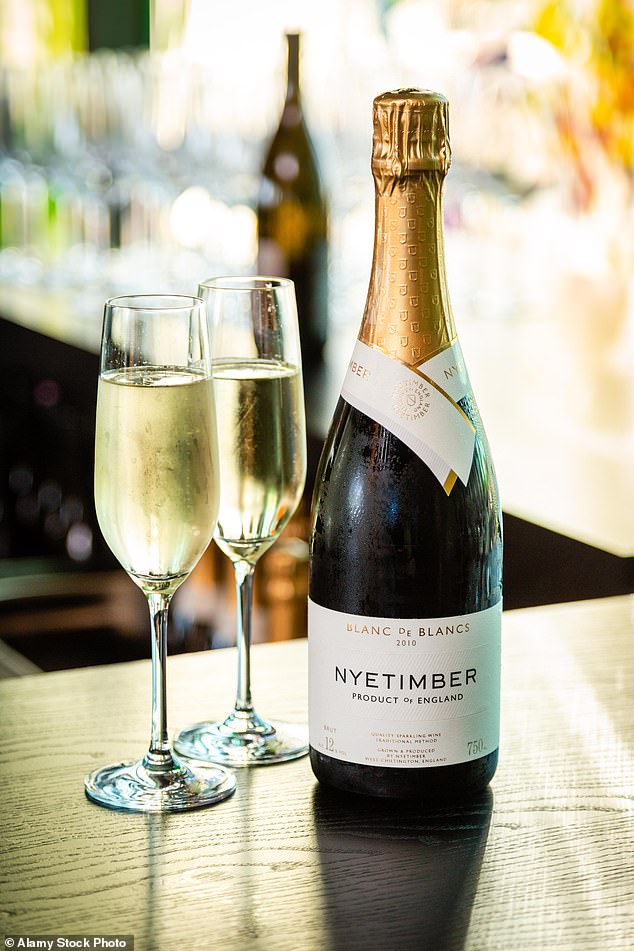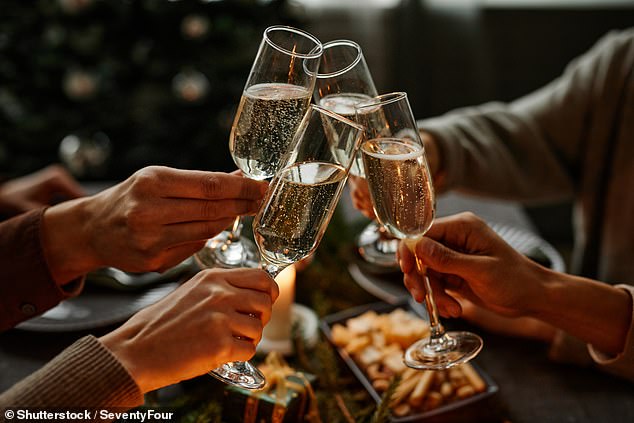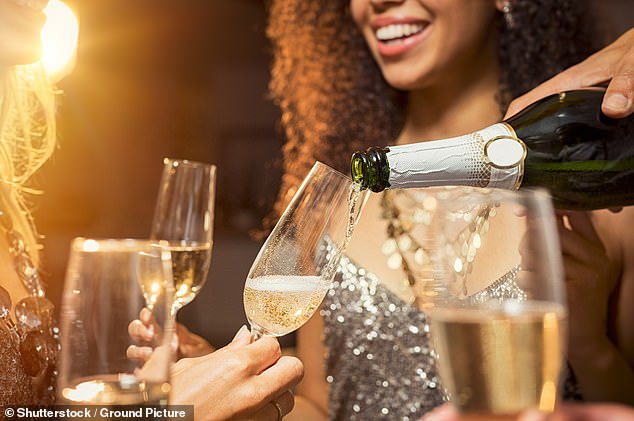You’re drinking champagne wrong if you reach for a flute every time a bottle is popped, experts have said.
The glassware ‘does nothing’ for champagne and sparkling wines, according to an 11th-generation Austrian glassmaker who has vowed to ‘make them obsolete’.
Speaking to The Telegraph, Maximilian Riedel recommended swapping it for a traditional white wine glass or a tulip-shaped one with a larger surface area that allows you to savour the wine’s aroma before taking a sip.
Riedel isn’t the only expert with a distate for champagne served in flutes; sommelier Sandia Chang had them banned from Kitchen Table, the two-Michelin-starred London restaurant she runs with her chef husband James Knappett.
Apart from their aesthetic appeal, experts insist there’s no benefit to drinking champagne or sparking wines from flutes as award-winning drinks writer and broadcaster Helena Nicklin told FEMAIL the narrow glasses add a ‘sense of occasion to drinking bubbles’.
However, it is true you miss a lot of the flavour, she continued.
‘Wine needs space and air to open up after all that time in the bottle, so serving it in a skinny flute is like keeping the mute button on,’ Nicklin said.
‘While this doesn’t matter so much with inexpensive Prosecco or cheap fizz, it’s a real shame for those more premium, traditionally-made sparkling wines and Champagnes that have layers of delicate flavours,’ she added.

Experts have warned you’re probably drinking champagne wrong if you reach for a flute every time a bottle is popped

The glassware ‘does nothing’ for champagne and sparkling wines, according to an 11th-generation Austrian glassmaker who has vowed to ‘make them obsolete’
She recommends swapping the flute for a tulip-shaped glass that about the same width as a small white wine glass that will give the wine the room it needs to ‘breathe while keeping the bubbles in as best as possible’.
Yann Munier, a native of the Champagne region and Cellar Master at the G. H. Mumm Champagne house, previously told MailOnline a white wine glass or rounded flute is preferable to a Champagne ‘coupe’.
‘I recommend a white wine glass or a rounded flute for optimal tasting. Indeed, the Champagne “coupe” (a very flat glass) disperses the aromas and there is not enough height in the wine to see the bubbles.
‘So choose a glass in which you can swirl the wine to smell it and with a tighter top.’
Munier’s top tips for enjoying a glass of bubbly include serving it chilled, but not iced, at around six to eight degrees Celsius as an aperiif.
If it’s being enjoyed with a main course, the ideal temperature is between nine and 12 degrees.
He advises pouring the Champagne slowly while tilting the glass to preserve the bubbles.
‘Don’t fill the glass completely, two-thirds full is the maximum, leaving enough space for the aromas to develop,’ he said.

Award-winning drinks writer Helena Nicklin told Femail that while flute glasses create a ‘sense of occasion’, you tend to miss out on a lot of champagne’s flavour
Some of the common mistakes include servicng Champagne ‘too hot or cold’ or using the wrong glass.
‘It’s also important to remember that tasting Champagne should be a full sensory experience – take time to look at the colour and feel the effervescence, smell the aromas and savour the complexity of the flavours,’ he added.
It comes after sales of champagne in the UK slumped to a 25-year low amid the cost-of-living crisis and the rise of sober-curious GenZ.
MailOnline reported that 22.3 million bottles of bubbly were shipped to Britain last year, which is the lowest since 2000 when 20.5 million were imported.
A decline in sales has led to a significant increase in price with the cost of a bottle soaring by 25 per cent in the last three years alone. At many major retailers, shoppers can now expect to pay more than £40 for champagne.
It’s hardly surprising then that sales of alternatives such as Prosecco are at an ‘all-time-high’. At Waitrose, a bottle of Waitrose Blueprint Prosecco can be snapped up for just £6.39.
Indeed, 660 million bottles of prosecco and more than 114.5 million bottles of Cremant, a similar alternative, were sold in 2024.
But a bottle of champagne doesn’t necessarily have to break the bank; while you may be tempted to splash out on a luxury bottle, Which? has deemed three non-vintage champagnes from supermarket chains Teso, Aldi and Waitrose are better than the leading brand.

It comes after sales of champagne in the UK slumped to a 25-year low amid the cost-of-living crisis and the rise of sober-curious GenZ
A panel of four independent wine experts then blind-tasted the selection, scoring them to uncover the best of the bunch.
The panel’s highest score went to the Tesco Finest Premier Cru Brut Champagne, at 82 per cent. The bottle of bubbly costs just £25 per bottle.
It beat Moët & Chandon’s Brut Imperial, which scored 77 per cent despite being almost double the price at £44 per bottle.
Also scoring above the UK’s leading champagne house is Aldi’s Veuve Monsigny Premier Cru Brut Champagne, which ranked at 80 per cent. The bottle is priced at £20.
The panel liked its aroma of ‘crunchy green apples with a suggestion of pecans, spice and butterscotch’.
And Waitrose impressed with its Brut NV Champagne, which also scored 80 per cent. The bottle, priced at £25, has ‘pleasing peach, pear and apple flavours, and a superb nut and winter spice taste’.
Which? also tested sparkling wines, and uncovered some “brilliant” budget options.
The cheapest of these, Lidl’s Prosecco Superiore Valdobbiadene, scored 80 per cent.
‘At £7.49 a bottle, this Great Value option is an excellent alternative to champagne, and perfect for Christmas parties,’ the consumer group said.












